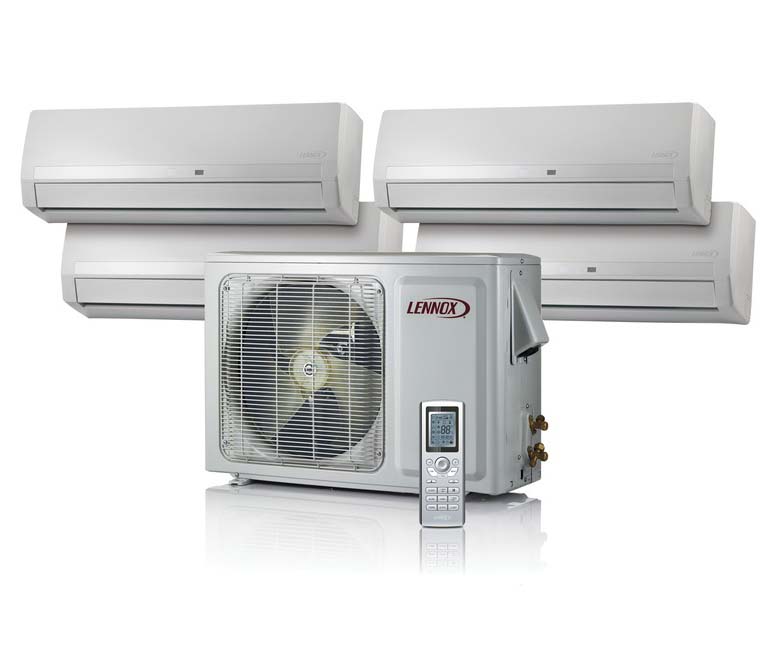Ductless Mini-Split Installation or Replacement
Mini-Split Ductless Heating and Cooling System
A mini-split ductless heating and cooling system lets you control your home’s comfort level while also reducing your energy use. You can install a ductless mini-split system in one part of your home, such as an addition, or use the system throughout your house to control the temperature in each room. Since the system can heat or cool designated zones, you do not need to worry about cooling or heating areas you are not using.
SMO Energy offers free in-home energy consultations to residents of Southern Maryland. If you are interested in installing a ductless mini-split system in your home or want to replace an existing system, learn more about how the systems work and the benefits of using one. Then, get in touch with us to schedule a consultation today.

Schedule your FREE consultation now
Fill out the form below to have one of our Client Care representatives contact you with more information about finding the right air conditioner for your home, and to schedule your free in-home energy consultation.
What Is the Average Cost of a Mini-Split Ductless System?
How much you can expect to pay for a ductless mini-split system depends on a variety of factors. Those factors include the size of your home, how many zones you need to heat or cool, how energy-efficient the system is and whether you are replacing an existing system or not.
Mini-split systems used for air conditioning also tend to cost considerably more than similarly sized window units.
You might pay more for a mini-split system itself, but you can also avoid the cost of installing ductwork in your home, which can help you save money. Also, a mini-split system often uses less energy compared to a window unit or central A/C system, which also helps you save money.
Every home is different, and the needs of one household can differ from the requirements of another. Your best bet is to get a free quote from SMO Energy to get a sense of what you can expect a mini-split system to cost.

Benefits of a Ductless Mini-Split Heating and Cooling System
Whether you are looking to add mini-split heat pumps to your whole home or new construction, or are retrofitting to an older home with no ductwork, there are many benefits you can enjoy by going ductless:
Energy-efficient
Supplemental heating or cooling where you need it
Eliminates the need for window units
No need for ductwork
Sleek and compact design
Individual temperature control
Common Questions About Mini-Split Systems
Do you have questions about the benefits of a ductless mini-split system or want to learn more? Here are answers to some of the most commonly asked questions.
Yes, mini-split systems are energy efficient. They avoid energy loss through ductwork that is common with forced air and ducted heating and cooling systems. Since the systems allow you to control the temperature in distinct zones individually, they tend to use less energy compared to systems that heat or cool an entire house.
Mini-split systems can be used to heat or cool your home. Most ductless mini-split systems are heat pumps, which work by transferring heat from one area to another.
A mini-split system is ideal for use in a home that does not have existing ductwork. In a house with ductwork, it can make more sense to install another type of system, as the cost of a ductless system might not be worth it.
SMO Energy is pleased to offer 0% financing to qualified buyers, plus many other great financing options. During your energy consultation, a member of our team will be happy to discuss financing options with you.
Regular maintenance is essential to keep your home’s heating and cooling equipment running smoothly and efficiently. SMO Energy offers regular tune-ups and inspections of ductless mini-split heat pump systems. We also provide service agreements and will repair or replace parts that become damaged as under regular use of your system.
SMO Energy is your total home comfort provider. We have many services to offer, such as heating fuel delivery, HVAC maintenance and HVAC repairs. We can install, repair or replace a variety of heating and cooling equipment, including furnaces, HVAC systems and fireplaces.
SMO Energy has a range of HVAC equipment available. We are happy to work with you and to evaluate the needs of your home to help you choose the equipment that is best for you. We can install, replace or repair furnaces, fuel tanks, air conditioners, boilers, heat pumps, water heaters, indoor air quality systems, and much more.
SMO Energy has been serving Southern Maryland since 1926. Our service area includes:
- Anne Arundel County
- Calvert County
- Charles County
- Prince George’s County
- St. Mary’s County
Choose SMO Energy for Ductless Mini-Split Installation or Replacement
Is a ductless mini-split system the best option for you? The energy consultants from SMO Energy can discuss your needs and evaluate your home’s current setup. We will help you choose the heating and cooling equipment that is the best fit for you. If a ductless system does not meet your needs, we can discuss HVAC alternatives with you.
We are locally operated in Southern Maryland and have had the pleasure of serving Maryland since 1926, providing top-rated customer service. We look forward to helping many more generations to come and hope to have you as part of the SMO Energy family.
Contact us today to learn more about our heating and cooling services and the equipment options we have available.
Get a Free Quote Today
We provide HVAC services for Anne Arundel County, Calvert County, Charles County, Prince George’s County, and St. Mary’s County.
